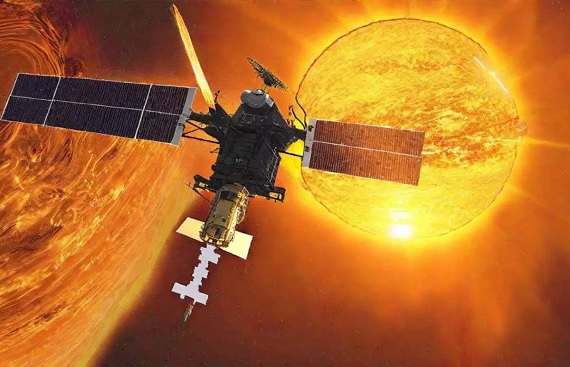ISRO's Aditya L1 completes its second earth-bound maneuver successfully
By
siliconindia | Tuesday, 05 September 2023, 04:06 Hrs

Aditya L1, India's pioneering space mission dedicated to studying the Sun, has successfully completed its second earth-bound maneuver. The Indian Space Research Organisation (ISRO) made this announcement early, marking a crucial step in the mission's progress. The maneuver, known as the "second Earth-bound maneuver (EBN#2)," was executed flawlessly by ISRO's Telemetry, Tracking, and Command Network (ISTRAC) located in Bengaluru. The operation was closely monitored by ISRO's ground stations in Mauritius, Bengaluru, and Port Blair. The result of this maneuver is a new orbit with dimensions measuring 282 kilometers by 40,225 kilometers.
Looking ahead, the third maneuver (EBN#3) is scheduled for September 2023 at around 02:30 Hrs. IST. Aditya-L1 distinguishes itself as the first Indian space-based observatory designed to study the Sun. It orbits the first sun-earth Lagrangian point (L1), situated approximately 1.5 million kilometers away from Earth. The mission's initial earth-bound maneuver was successfully executed in September, setting the stage for what lies ahead. The spacecraft is anticipated to undergo two more earth-bound orbital maneuvers before it is transferred to its final destination, the Lagrange point L1. Aditya-L1 is projected to reach its designated orbit at the L1 point after approximately 127 days.
The Aditya-L1 spacecraft was launched into space aboard ISRO's Polar Satellite Launch Vehicle (PSLV-C57) on September, 2023, from the Second Launch Pad of Satish Dhawan Space Centre (SDSC) in Sriharikota. Following a 63-minute and 20-second flight, Aditya-L1 successfully entered an elliptical orbit measuring 235 kilometers by 19,500 kilometers around Earth. This unique orbit allows the satellite to continuously observe the Sun without interruptions caused by occultation or eclipses. This clear picture will provide important insights into solar activity and its impact on real-time space weather.
ISRO and national research laboratories, including the Indian Institute of Astrophysics (IIA) in Bengaluru and the Inter-University Centre for Astronomy and Astrophysics (IUCAA) in Pune, designed seven scientific payloads for Aditya-L1. Using electromagnetic, particle, and magnetic field detectors, these payloads are designed to investigate various parts of the Sun, including the photosphere, chromosphere, and the outermost layers known as the corona.
To put this in context, there are five Lagrangian points between Earth and the Sun where small objects can maintain stable positions while using little fuel. These points are named after the Italian-French mathematician Joseph-Louis Lagrange, who introduced them in his renowned 1772 paper, "Essai sur le Probleme des Trois Corps." These Lagrange points offer an advantage to spacecraft, allowing them to conserve fuel while remaining in a stable position where the gravitational pull of the Sun and Earth is balanced by the necessary centripetal force. Aditya L1's mission is poised to make the most of this unique vantage point, offering unprecedented insights into the Sun and its activities.
